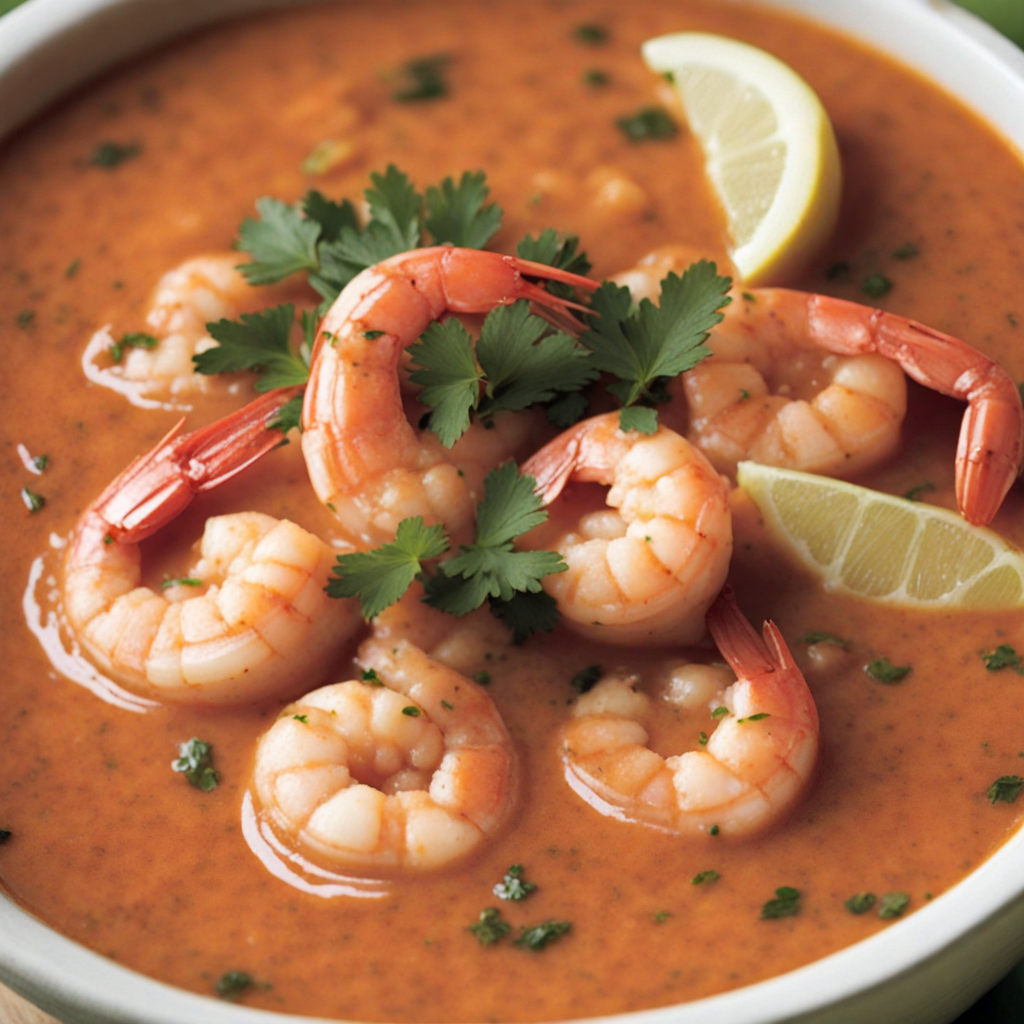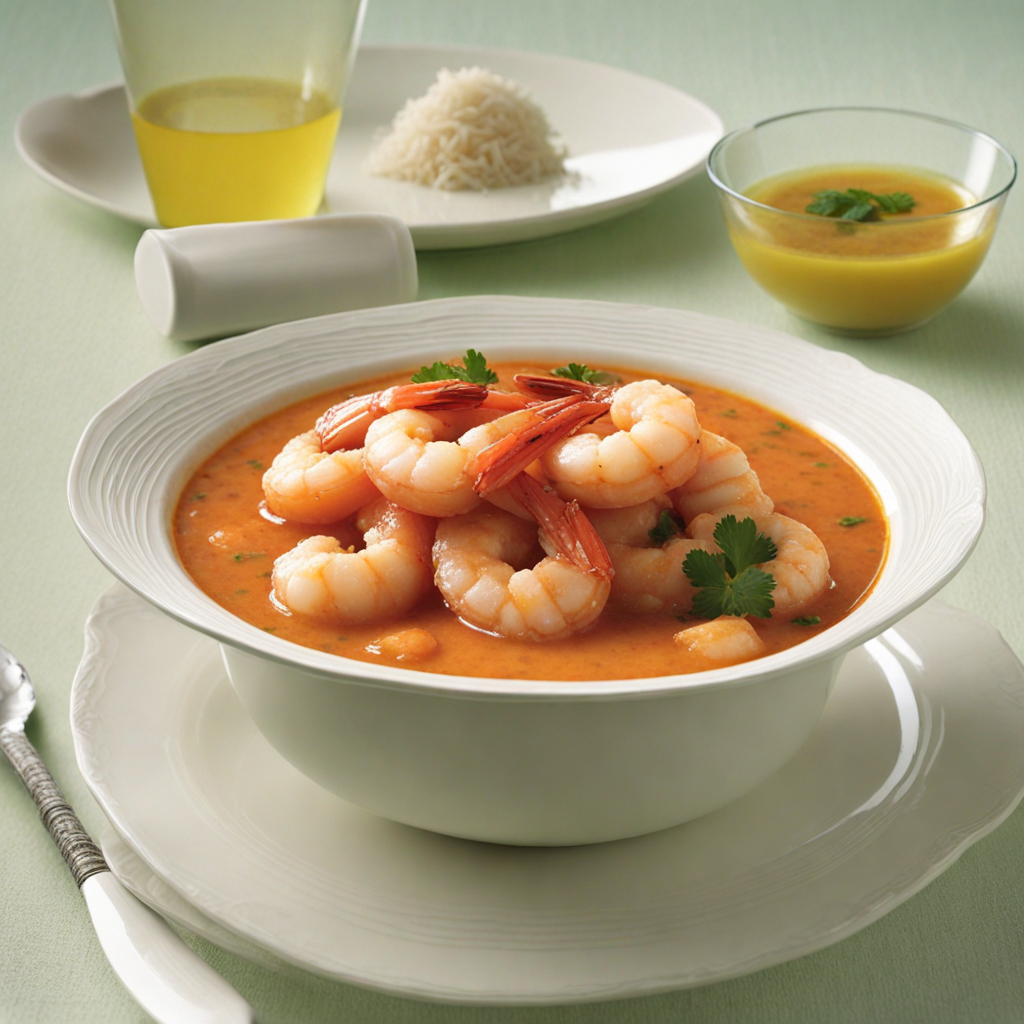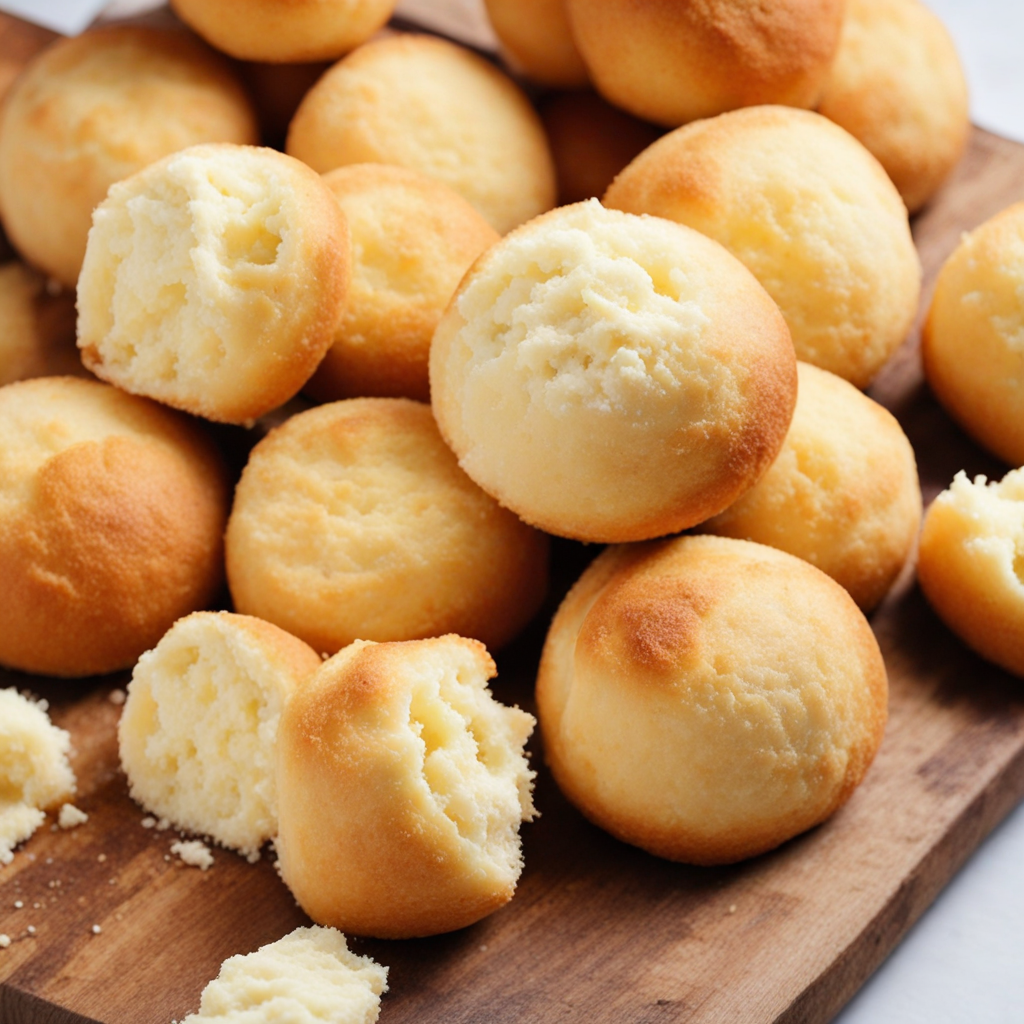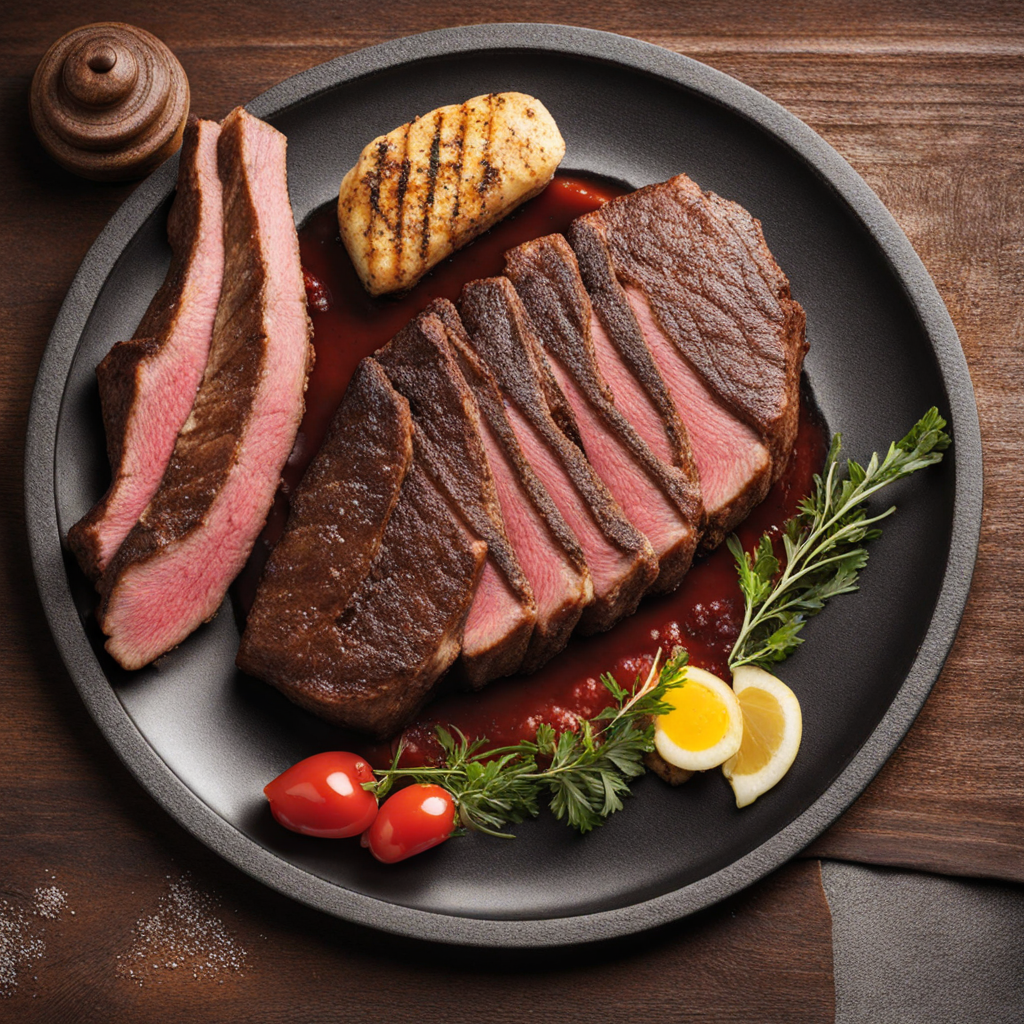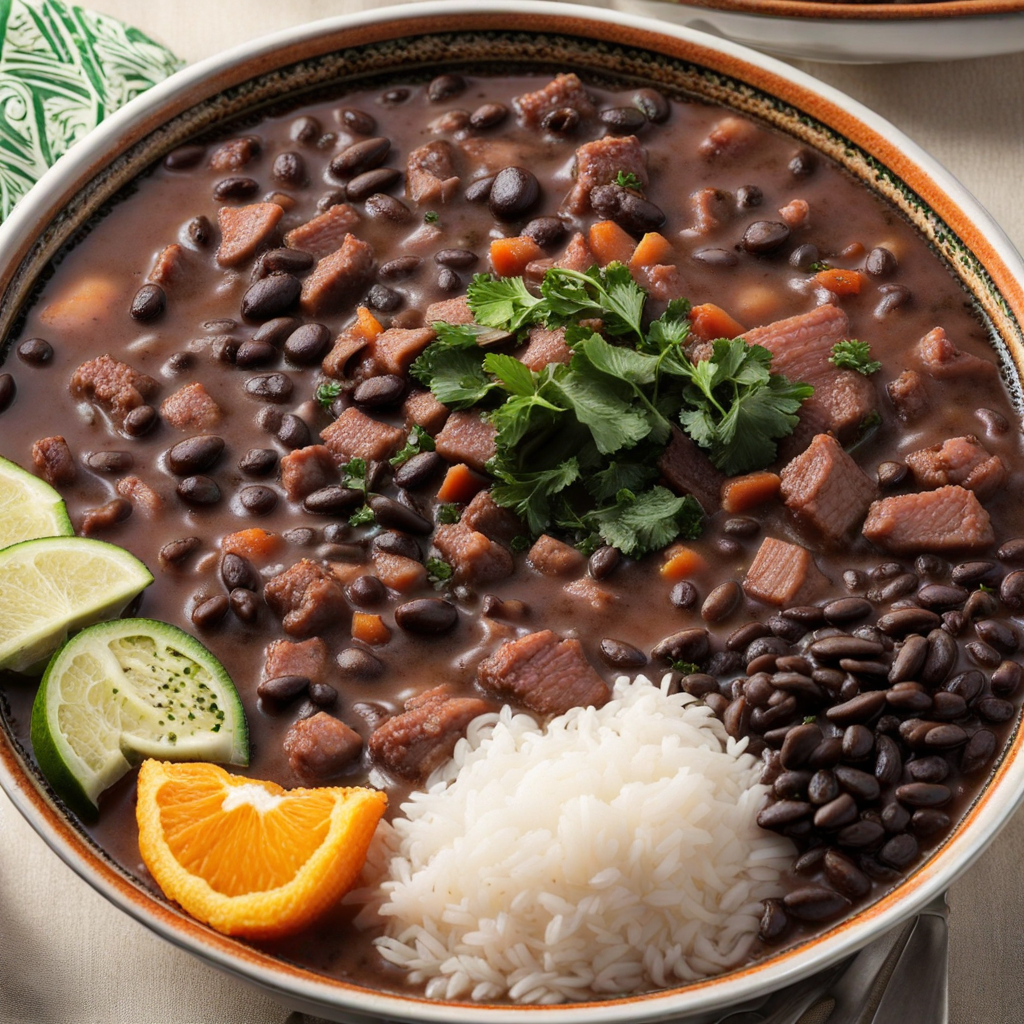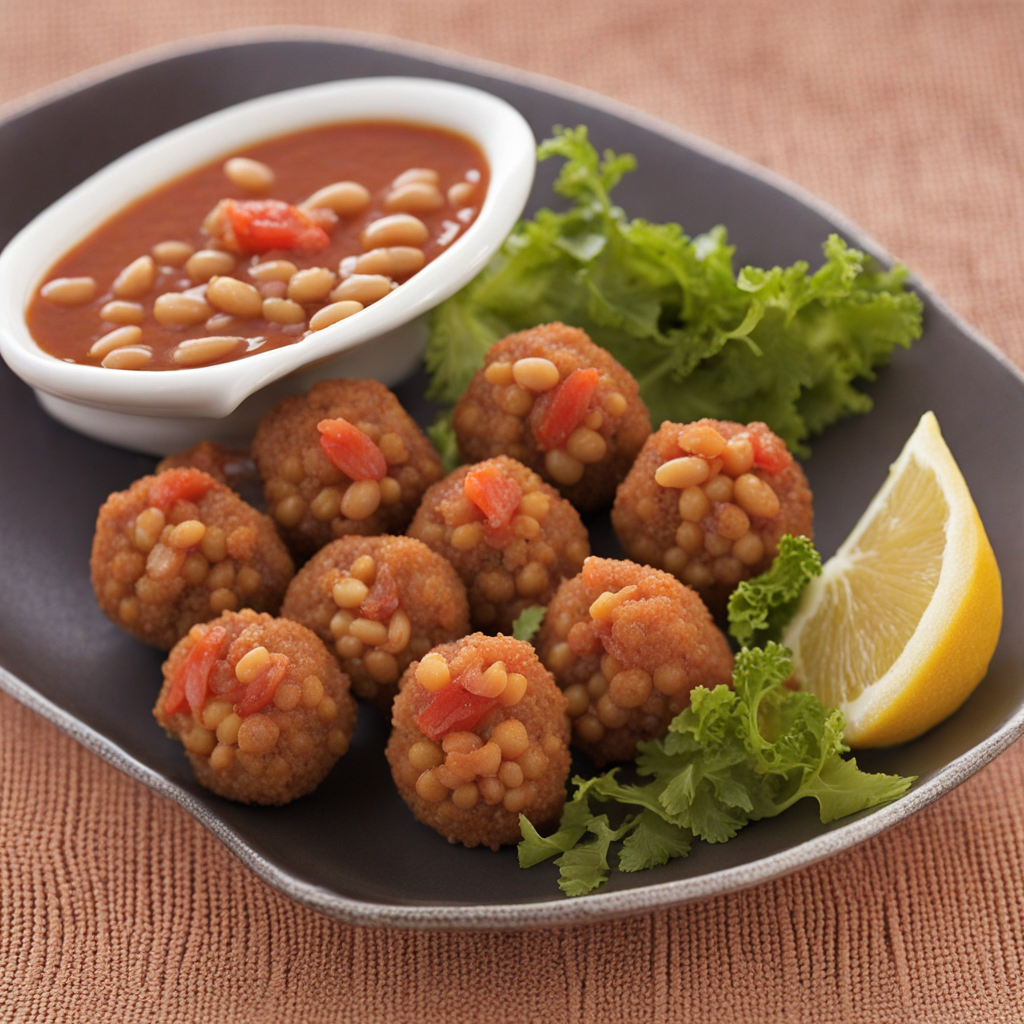Bobó de Camarão
Bobó de Camarão is a delightful Brazilian dish that perfectly encapsulates the vibrant flavors and textures of the country's coastal cuisine. This rich shrimp stew combines succulent shrimp with a creamy base made from puréed cassava (also known as yuca or manioc), which imparts a smooth and velvety consistency. The dish is typically enhanced with a variety of aromatic ingredients, including onions, garlic, and bell peppers, all sautéed to create a fragrant foundation. Coconut milk often plays a starring role, adding a tropical sweetness that balances the savory notes of the shrimp and spices, such as paprika and cilantro, which contribute to its colorful appearance and tantalizing flavor profile. As you take your first spoonful of Bobó de Camarão, you are greeted with a wave of flavors that dance on your palate. The sweetness of the coconut milk harmonizes beautifully with the natural brininess of the shrimp, while the cassava provides a comforting, hearty element that makes the dish satisfying and filling. The vibrant colors of the dish, often garnished with fresh herbs and served alongside white rice, make it as visually appealing as it is delicious. Each bite is a celebration of the fresh, local ingredients that are staples in Brazilian cooking. This dish is not just a meal; it’s an experience that transports you to the shores of Brazil, where seafood lovers delight in the abundance of the ocean. Traditionally served during gatherings and festive occasions, Bobó de Camarão embodies the spirit of Brazilian hospitality. Whether you are enjoying it at a local restaurant or preparing it at home, this dish promises to introduce you to a world of new flavors, showcasing the unique culinary heritage of Brazil that is sure to leave a lasting impression.
How It Became This Dish
Bobó de Camarão: A Flavorful Journey through Brazil's Culinary Heritage Bobó de Camarão is a beloved dish from Brazil, celebrated for its rich flavors and comforting textures. It is a shrimp stew made with a base of manioc (also known as cassava), coconut milk, and a medley of spices and herbs. The origins of this dish are deeply rooted in Brazilian history, intertwining indigenous, African, and Portuguese influences to create a culinary masterpiece that is both vibrant and significant in Brazilian culture. The Origins of Bobó de Camarão To understand the origins of Bobó de Camarão, one must delve into the history of Brazil itself. The country’s culinary landscape is a tapestry woven from the diverse threads of its indigenous peoples, Portuguese colonizers, and enslaved Africans who arrived during the transatlantic slave trade. Each group contributed unique ingredients and cooking techniques that shaped the nation’s gastronomy. The indigenous peoples of Brazil were the first to cultivate manioc, a staple crop that has been a cornerstone of Brazilian cuisine since pre-Columbian times. They developed various methods to prepare manioc, including soaking, fermenting, and grinding it into flour or starch, which are essential for dishes like Bobó. The use of coconut milk, another fundamental ingredient in Bobó de Camarão, can be traced back to the coastal regions of Brazil, where coconuts thrive. When the Portuguese arrived in the 16th century, they brought their culinary traditions with them, introducing ingredients such as spices, onions, and garlic. The fusion of these elements with local produce laid the groundwork for what would become a uniquely Brazilian cuisine. The presence of shrimp in the dish reflects Brazil’s extensive coastline and the abundance of seafood, which became a staple for many coastal communities. The African influence is perhaps the most significant in the development of Bobó de Camarão. Enslaved Africans brought to Brazil, particularly from regions like West Africa, contributed their culinary techniques and flavors. The use of palm oil, spices, and the concept of stews are hallmarks of African cooking that found their way into Brazilian dishes. The combination of indigenous ingredients with African cooking methods and Portuguese seasoning is what gives Bobó de Camarão its distinct character. The Cultural Significance of Bobó de Camarão Bobó de Camarão is not just a dish; it embodies the cultural identity of Brazil. It is often associated with the northeastern region, particularly Bahia, where Afro-Brazilian culture is vibrant and influential. The dish is commonly served during festive occasions, family gatherings, and celebrations, making it a symbol of togetherness and community. In Bahia, the dish is celebrated during festivals and is often accompanied by rice, which balances the richness of the stew. Street vendors and local restaurants proudly serve Bobó de Camarão, showcasing the dish as a representation of regional pride. The preparation of Bobó is often a communal activity, with family members coming together to peel shrimp, chop vegetables, and stir the pot, reinforcing the bond between generations. Moreover, Bobó de Camarão reflects Brazil’s diverse culinary landscape. Each region has its own twist on the dish, incorporating local ingredients and flavors. In some areas, chefs might add different seafood, while in others, they might enhance the stew with local spices or herbs. This adaptability highlights the dynamic nature of Brazilian cuisine, where tradition meets innovation. Development Over Time Bobó de Camarão has evolved significantly over the centuries, paralleling Brazil’s social and cultural changes. In the early days, the dish was likely prepared in a simple manner, emphasizing the natural flavors of the ingredients. As Brazil became more urbanized in the 19th and 20th centuries, the preparation of Bobó de Camarão began to reflect the influences of modern cooking techniques and the availability of new ingredients. The incorporation of coconut milk into Bobó de Camarão became more pronounced as coconut plantations expanded in the northeastern region. Coconut milk adds creaminess and a subtle sweetness, enhancing the dish's overall flavor profile. Additionally, the introduction of new spices and seasonings from international trade further diversified the dish. Chefs began to experiment with flavors such as cilantro, lime, and even chili, giving Bobó de Camarão a modern twist while retaining its traditional roots. In recent decades, Brazilian cuisine has gained international recognition, with dishes like Bobó de Camarão becoming popular in fine dining establishments and culinary festivals worldwide. Chefs in Brazil and abroad have begun to reinterpret the dish, often highlighting its indigenous and African roots while introducing contemporary techniques and presentations. This has led to a renaissance of interest in traditional Brazilian foods, with Bobó de Camarão at the forefront. Conclusion Bobó de Camarão is more than just a delicious shrimp stew; it is a testament to Brazil’s rich history and cultural diversity. The dish encapsulates the flavors, traditions, and stories of a nation shaped by the interplay of indigenous, African, and Portuguese influences. As it continues to evolve, Bobó de Camarão remains a cherished part of Brazilian identity, a dish that brings people together and celebrates the country’s vibrant culinary heritage. Today, as you savor a bowl of Bobó de Camarão, you’re not just enjoying a meal; you’re partaking in a centuries-old tradition that speaks to the heart and soul of Brazil. Whether enjoyed in a bustling Bahian market or at a family gathering, Bobó de Camarão embodies the love, culture, and history of a nation, making it a dish worth celebrating for generations to come.
You may like
Discover local flavors from Brazil


